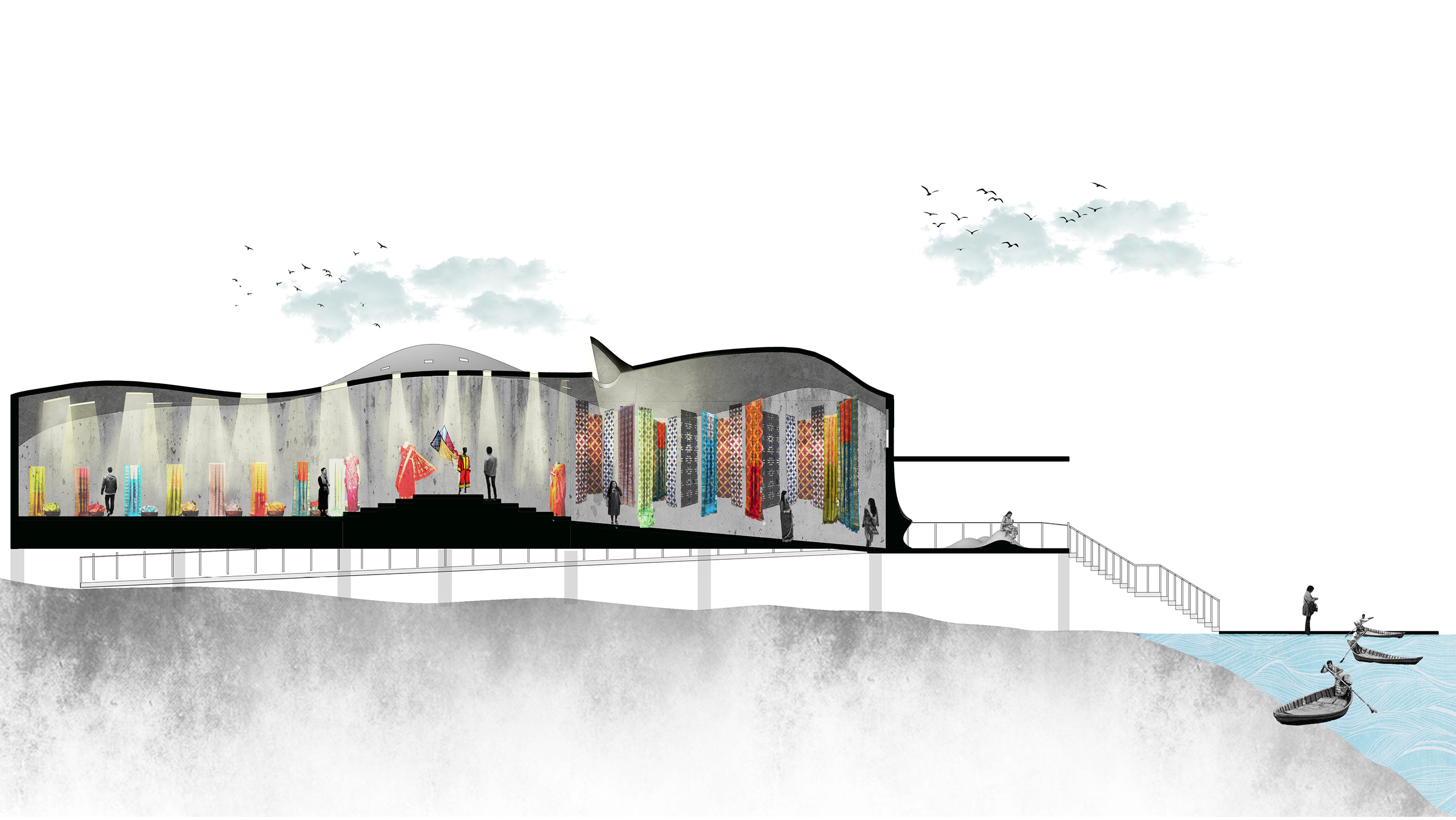Silk Pavillion

Category
Daylight in buildings - Region 4: Asia and Oceania
Students
Badhan Das
School
University of Asia Pacific
Country
Bangladesh
Download
Download ↓
SilkSilk is the finest natural fiber and considered the queen of fibers for its quality and elegant appearance which comes from silkworm cocoons that are spun by silkworms.Silk RouteSilk was invented in China and the Silk Route is the most popular trade route which connects east to west and vice versa. Through this route, countries are enriched with cultural , religious , and goods exchange.Silk City- RajshahiRajshahi is the oldest city which holds the largest silk mill. In the half of 17 century, the region was selected for silk cultivation because the weather was found suitable for growing mulberry tree and rearing silkworms that only feed these trees. Silk is called Bengal Silk here.The silkworm’s life cycleWhen a female silk moth lays eggs, the life cycle of the silk moth begins. The caterpillars or larvae of the silk moth are hatched from the silk moth’s eggs. Silkworms produce pupa by feeding on mulberry leaves. To keep itself alive during the pupa stage, the silkworm weaves a net around itself. After that, it swings its head, spinning a protein fibre that eventually turns into silk. The cocoon is a protective layer formed by many caterpillars that surrounds the pupa. The silk thread (yarn) is made from the cocoon of the silk moth. The silkworm’s life cycle is described in detail here.Project descriptionIn the river banks, this silk pavilion connected to its context through this fluid roof and sitting space which appears to visitors as draping of silk fabric. Silk fabric such as sarees (Bengali traditional wear) /raw fabric will be exhibited in the pavilion where people can understand the fabric through light.First section represents mulberry silk where an ambient light from elevation makes the space smooth, soft as like mulberry silk.Second section represents eri silk which is a little bit textured. The gap between fiber is larger than mulberry silk. The space exhibits eri silks where small perforated lights come through the ceiling and step the floor to represent the quality of fabric.Third section represents tassar silk which is much more harsh textured and the gap between fibers is larger. The space is illuminated by many hard, straight sunlight through the ceiling.Whole space represents silk fabrics and it seems like fabric covers the space and light comes from between the gaps of fabric. Outside of the pavilion , the roof becomes front sitting for the public which also introduces silk fabrics. People are sitting in the adulation of silk fabrics and it also connected the river in front of the pavilion.

































